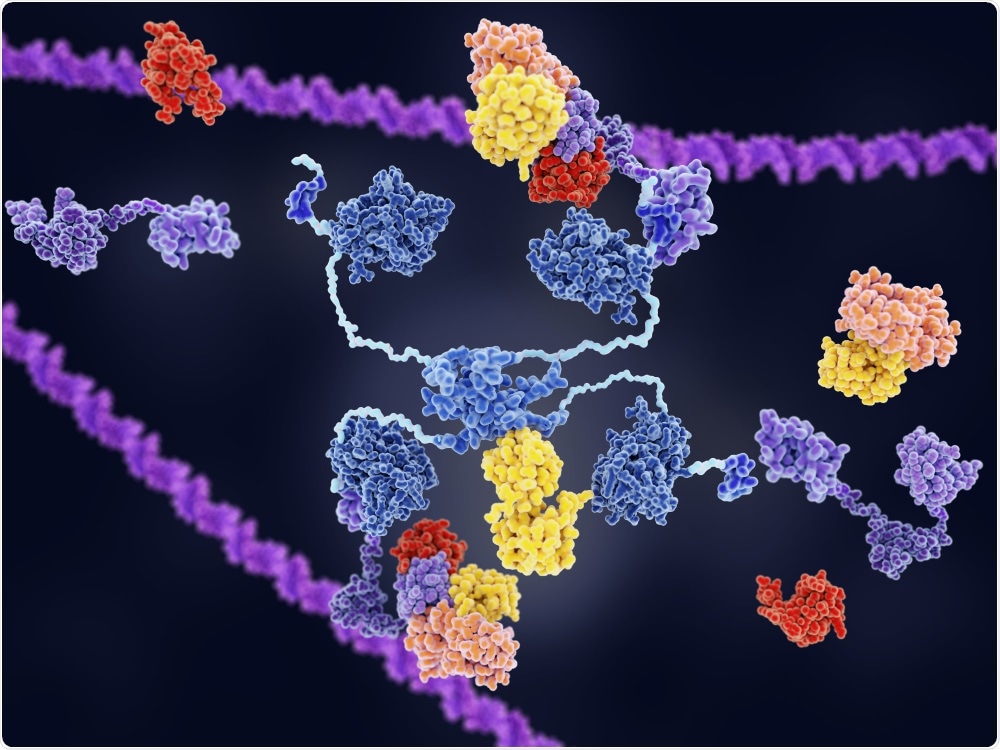Scientists have developed a method which is able to switch ‘tumor suppressor’ genes back on after they have been silenced by cancer cells. The discovery has strong implications for the development of new therapies that could halt tumor growth through manipulating a regulatory protein that is commandeered by cancer cells.
 Juan Gaertner | Shutterstock
Juan Gaertner | Shutterstock
Cancer cells hijack tumor suppressor proteins
New research has progressed our understanding of how cancer cells manipulate proteins that have functions in gene expression.
Scientists have been able to show that cancer cells directly assume command of a particular regulatory protein, polycomb repressive complex 2 (PRC2) in order to block deactivate tumor suppressor genes. As a result, tumor suppressor genes are left unactivated, and this gives tumors the opportunity to grow uninhibited.
The PRC2 protein is used by healthy cells to silence genes as part of normal cell function. But cancer cells take advantage of its gene silencing abilities and force PRC2 to bind with tumor suppressor genes which would normally be left switched on.
Switching tumor suppressor genes back on
To counteract the impact of cancer cells on PRC2, scientists have found a way to remove the protein from the binding sites on the tumor suppressor genes.
Using healthy cells in the lab the team were able to discover more about the nature of PRC2, uncovering that it also binds to ribonucleic acid (RNA), and when it does, the new binding prevents its attachment to genes and no longer has the impact of switching them off.
The team were able to demonstrate how RNA could be used to undo the work of the cancer cells, and remove PRC2 from binding sites on tumor suppressor genes.
Lab tests were able to exhibit the impact of RNA on PRC2, as scientists attached RNA to silenced tumor suppressor genes using the protein Cas9 endonuclease dead (dCas9) and found that it was able to remove the protein, having the impact of reactivating the tumor suppressor gene.
PRC2 in the lab
The researchers at the UCL Cancer Institute in the UK alongside the Cancer Research UK UCL Centre, part of the University of London, specifically attached G-tract RNA to the tumor suppressor gene known as CDKN2A in lab tests looking at samples of malignant rhabdoid tumor cells.
In doing this they provided evidence that supports the theory that pre-mRNA has the impact of dislodging PRC2 during gene activation.
The findings show that pre-mRNA has the capabilities of targeting specific genes to force out PRC2, and in this case having the influence effectively reactivating the silenced tumor suppressor gene.
The method demonstrated here will add to the already impressive list of potential applications of the Cas-9 method, including treatment of muscle-invasive bladder cancer, castration-resistant prostate cancer, metastatic renal cancer and metastatic non-small cell lung cancer and more.
Avenues for further research
What was achieved in the lab will lead to therapeutic applications being advanced as researchers now focus on developing new targeted biotherapies for treating tumors based on exploiting the tumor suppressor gene reactivation pathway highlighted here.
The team plans to first explore which cancers the method could be applied to, and to investigate how RNA could be transported to the specific cancer cells within patients.
Further studies will hopefully lead to clinical trials, and eventually to a new and effective way of targeting tumors and stopping them in their tracks.
While it’s early days yet, the advent of a new biotherapy could potentially offer an alternative treatment to patients that may have fewer drawbacks and side effects that are related to current therapies.
Journal reference:
Beltran, M, et al. (2019). G-tract RNA removes Polycomb repressive complex 2 from genes, Nature Structural & Molecular Biology. https://www.nature.com/articles/s41594-019-0293-z